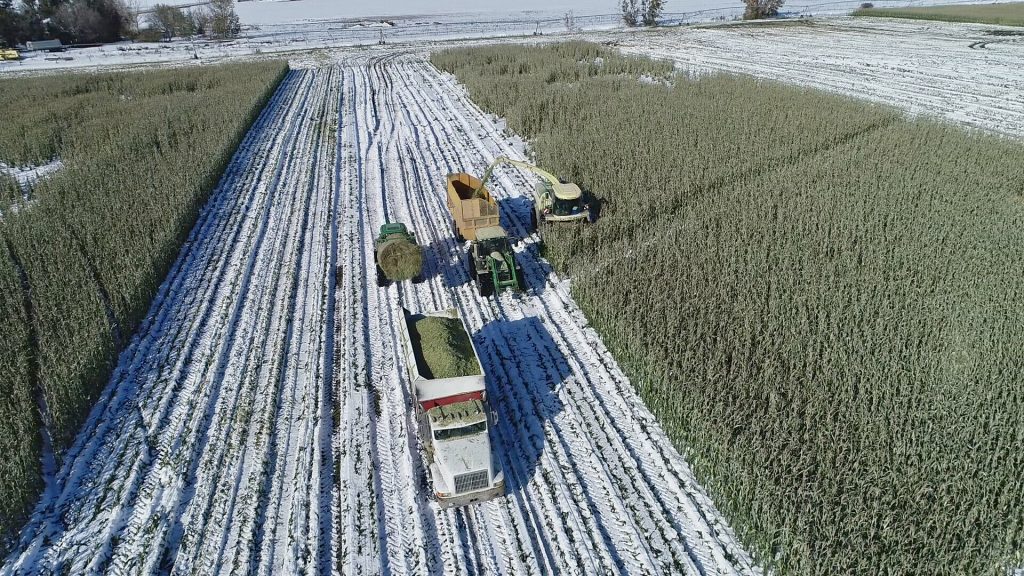
Features
Editorial: The difference a year makes
November 22, 2020 By Stefanie Croley
 Struggling through the 2019 corn harvest. Photo courtesy of Adrian Moens.
Struggling through the 2019 corn harvest. Photo courtesy of Adrian Moens. When I look back at news, tweets and notes from last year around this time, the general mood among the ag community was a lot less positive. Harvest was slow moving (to say the least), with Saskatchewan reporting only 69 per cent of the province’s crops in the bin by mid-October. Wet conditions, inconsistent weather and poor crop quality were just a few of the issues plaguing producers last fall during the affectionately named “harvest from hell.”
This year, by contrast, conditions were much more favourable for farmers across Western Canada. Saskatchewan producers enjoyed a long autumn season, with about 90 per cent of crops in the bin by early October, and Alberta and Manitoba farmers reported good harvest progress through late September and early October too. While lots of things about 2020 are different from 2019, this change is welcome – and much needed.
If you’ve been farming for a while, you undoubtedly have several years’ worth of notes, data and memories from your previous seasons. I bet you can recall a bumper crop year, or a mid-summer hailstorm that devastated your fields. Keeping track of this information and comparing trends and changes year-over-year not only makes for interesting shop talk, but it’s also helpful when it comes to making decisions for the future. Perhaps your strategies have stayed the same for several seasons, with weather being the only variable factor from one year to the next, but looking back at how you reacted to the challenges in your way can greatly impact how you move forward. Your barn may be full of equipment and supplies, but your farm data is a valuable tool to keep on hand too.
In this issue, we introduce Shift, a special supplemental section to the magazine with a focus on farm and agronomic technology. The stories in Shift are meant to highlight some of the ways technology – including data – is impacting modern farming, and how the industry is adapting. On page 14, you’ll read about a collaborative effort by Weather INnovations Consulting, the University of Manitoba and Agriculture and Agri-Food Canada in Saskatoon, along with industry partners, to develop a tool to help forecast Sclerotinia risk in Western Canada. And, on page 18, we dive a bit deeper into how farm data is being collected and used in trials, on farms and in the equipment world.
As you shift (pun intended) into the next phase of your year, keep in mind how data and technology can impact what you do next spring. While you’re looking back on previous years, you may find new ways to look forward, too.